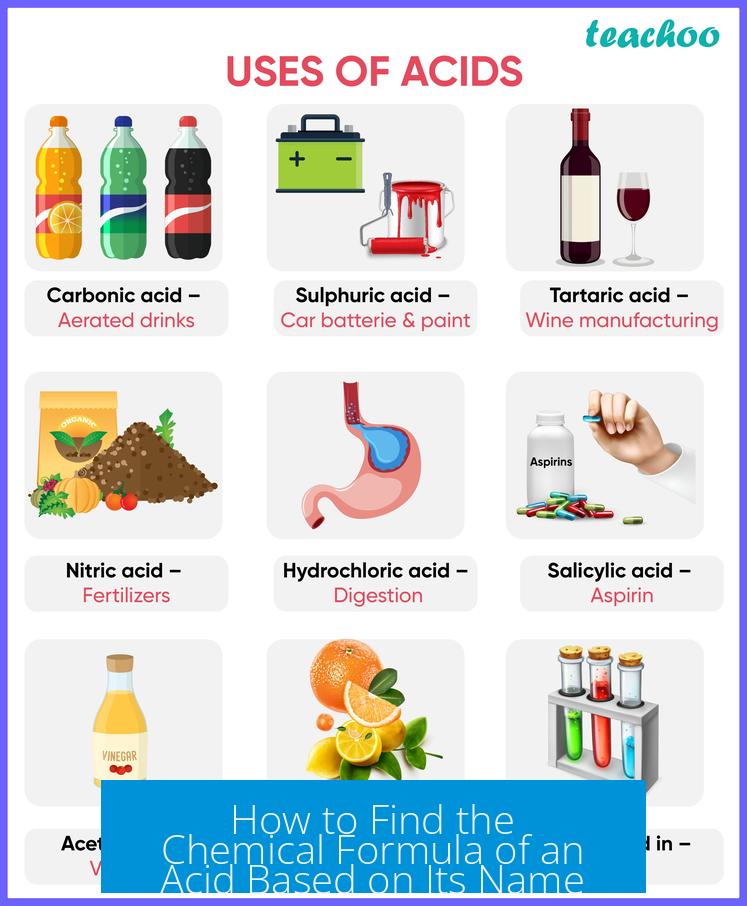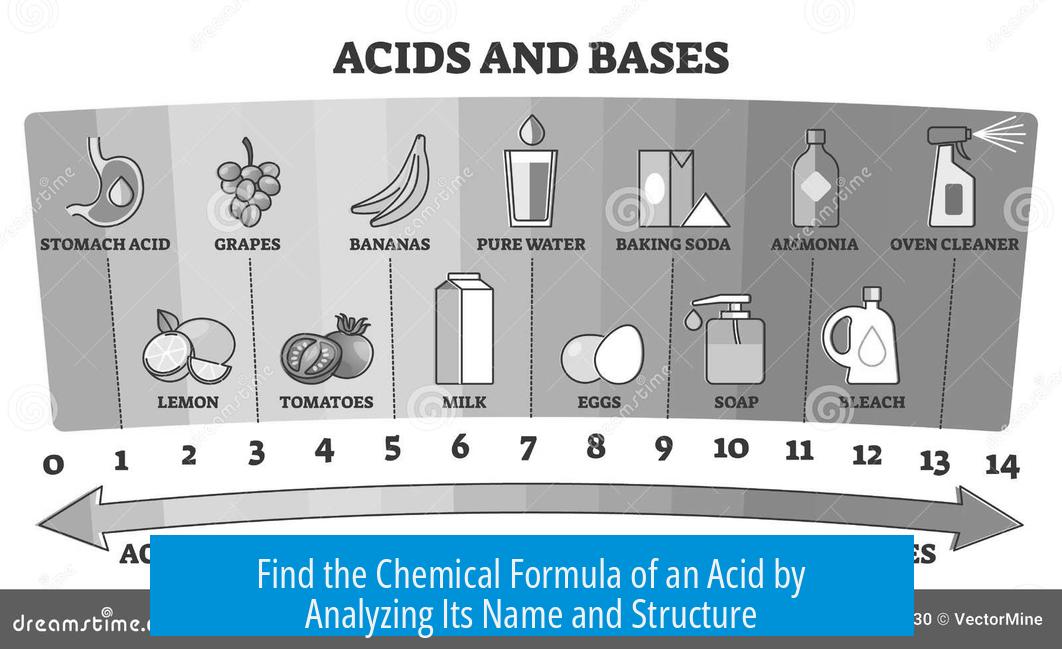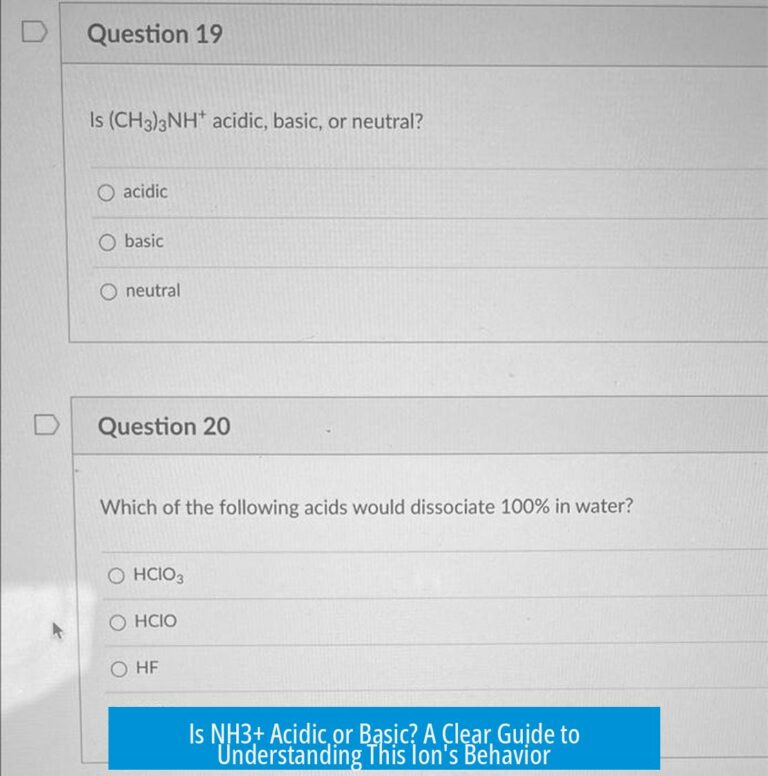How to Find the Chemical Formula of an Acid Based on Its Name

To determine the chemical formula of an acid from its name, identify the prefixes and suffixes that indicate the number of oxygen atoms and apply this to the central element, typically a halogen or nitrogen. This method mainly works for oxyacids like chlorine and nitrogen acids.
Step 1: Understand the Naming Pattern
Acid names often contain prefixes and suffixes that reflect their oxygen content. The key sequence to remember for halogen oxyacids is:
- Hypo- (lowest oxygen number)
- -ous
- -ic
- Per- (highest oxygen number)
This sequence corresponds to rising oxygen counts.
Step 2: Decode Prefixes and Suffixes
| Prefix/Suffix | Number of Oxygen Atoms | Example |
|---|---|---|
| Hypo- | 1 oxygen | Hypochlorous acid: HClO |
| -ous / -ate | 2 oxygens | Chlorous acid: HClO2 |
| -ic / -ite | 3 oxygens | Chloric acid: HClO3 |
| Per- | 4 oxygens | Perchloric acid: HClO4 |
The suffix “-ous” corresponds to one fewer oxygen than “-ic.” The prefixes “hypo-” and “per-” indicate extremes of oxygen content.
Step 3: Apply to Central Element
Identify the central atom (often a halogen like chlorine, bromine, or nitrogen). Combine the hydrogen ion (H+) with the appropriate polyatomic ion based on the oxygen count. For example:
- Chloric acid (HClO3) consists of hydrogen and chlorate ion (ClO3−).
- Nitric acid (HNO3) follows a similar oxygen numbering system.
Step 4: Recognize the Limits of This System
This naming convention primarily fits halogen and nitrogen oxyacids. Other acids may not follow these patterns. Memorization helps, but occasional referencing is normal even among experienced chemists.
Key Points to Remember:
- “Hypo-” means the acid has one less oxygen than “-ous” acids.
- “-ous” acids have fewer oxygens than “-ic” acids.
- “Per-” prefixes indicate the highest oxygen content for that element.
- Apply these rules mainly to halogen and nitrogen oxyacids.
- Combine the hydrogen ion with the corresponding oxyanion to form the acid’s formula.





Leave a Comment